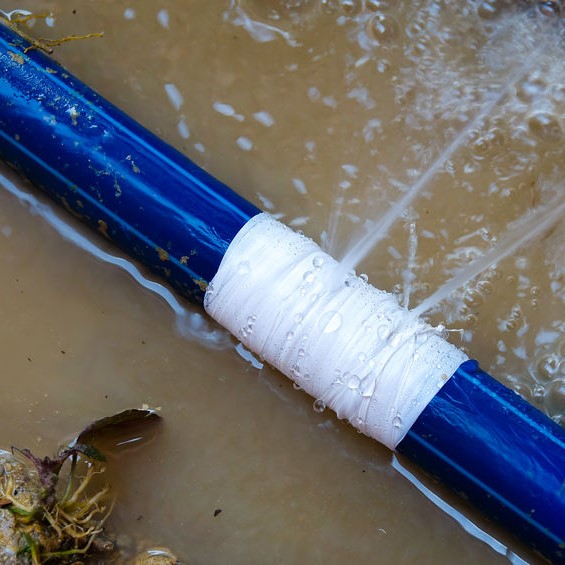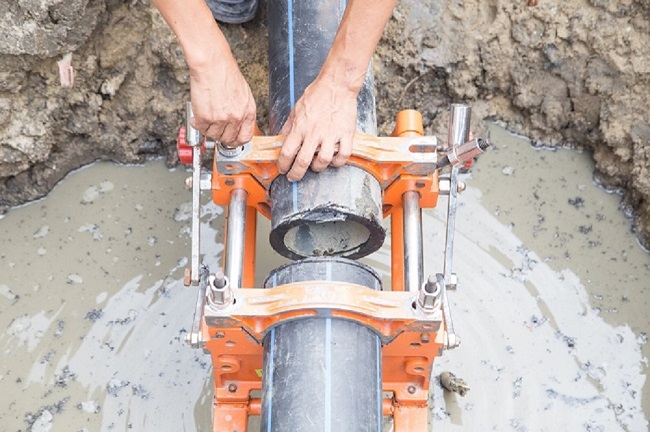Quick Guide: Identifying as well as Repairing Ruptured Pipes in your house
Quick Guide: Identifying as well as Repairing Ruptured Pipes in your house
Blog Article
We have come across this post relating to What to Know Before Installing a Dishwasher listed below on the net and figured it made good sense to discuss it with you on my blog.

A ruptured pipe is a major emergency; you can just stand as you watch water you pay very much to rejoin with the planet. In worse situations, you see a pool on your kitchen area flooring, which is a fantastic journey threat, especially if you have kids around. If the pipeline that ruptured was in your walls, problem: you might need to repaint that whole area.
Just how can a disaster like a burst pipeline be protected against and managed? Well, by listening to your specialist emergency plumbers and complying with these policies.
Just how do I know when my pipes have burst?
Changing water stress
Pipelines do not simply burst in a day. You may have noticed that your kitchen area faucet or shower doesn't run instantly when you turn the faucet. It may stop briefly for a couple of secs and afterwards blast you with even more force than usual.
In other instances, the water may seem typical initially, after that decrease in stress after a couple of secs.
Infected water
Many individuals think a ruptured pipeline is a one-way electrical outlet. Fairly the contrary. As water flows out of the hole or gash in your plumbing system, contaminants find their way in.
Your water may be contaminated from the source, so if you can, check if your water tank has any problems. However, if your drinking water is provided and also detoxified by the local government, you must call your plumber right away if you see or smell anything amusing in your water.
Puddles under pipelines as well as sinks
When a pipe bursts, the discharge creates a puddle. It may appear that the puddle is expanding in size, and also despite the amount of times you wipe the puddle, in a few minutes, there's another one waiting to be cleansed. Usually, you might not have the ability to trace the puddle to any noticeable pipelines. This is an indication to call an expert plumber.
Wet walls and also water discolorations
Prior to a pipe bursts, it will certainly leakage, a lot of times. If this consistent leaking goes undetected, the leakage may graduate right into a large laceration in your pipe. One easy means to prevent this emergency is to look out for wet wall surfaces ad water stains. These water discolorations will lead you right to the leakage.
Untraceable leaking noises
Pipeline bursts can take place in the most unpleasant locations, like within concrete, inside walls, or under sinks. When your house goes silent, you might be able to listen to an irritatingly persistent leaking noise. Even after you have actually checked your shower head and also kitchen faucet, the dripping might continue.
Beloved reader, the trickling may be originating from a pipe inside your wall surfaces. There isn't much you can do about that, other than tell a professional plumber.
Turn up the Warm
Establish fans to blow warmth into cool rooms. Maintain the garage door shut. If you have minimized water flow, warm one of the most susceptible pipelines (usually in basements and also crawl spaces or near exterior wall surfaces) with a hair dryer. Leave the tap on while you apply warmth. As you melt ice, the circulation will raise. To prevent pipelines from freezing, shield your walls.
Begin Getting Rid of the Water
Get hold of the mop, containers and a shop vacuum cleaner to start to remove the water because you absolutely don't want it saturating into whatever else in your house. Plus, a fast clean up will lower the chances of something obtaining musty.
What do I do when I find a ruptured pipeline?
Your water meter will remain to run also while your water wastes. To reduce your losses, locate the main controls as well as transform the supply off. The water pipe are an above-ground structure beside your residential or commercial property.
How to Fix & Detect a Leaking Pipe
How Do I Know if a Pipe is Leaking?
Leak detection tests can help you determine if your pipe has a leak. Even if you don’t see an apparent leak, you should still conduct leak detection tests regularly to save water and money—and prevent major damage to your home.
Water meter. It can be helpful to figure out what your usual water meter usage numbers are and then monitor them regularly. To monitor your meter, first, turn off all water faucets in your home. Check the meter and write down the numbers. In a few hours, check the meter again. If the numbers have changed, you have a leak. Water gauge. Use a water gauge to test your water pressure. Your showerhead should produce a certain amount of water pressure based on its model and design. If the pressure is lower than it is supposed to be for that specific showerhead, your home likely has a leak. Puddles. Look inside your bathroom, laundry, and kitchen sink cabinets. Puddles around the cabinets or around toilets, tubs, showers, and washing machines indicate the presence of a leaking pipe. You may also notice loose tiles, peeling or flaking paint, or mold caused by water accumulation. Napkin test. Even if you don’t see any puddles, you may still have a leak. You can test for water leaks in the bathroom, laundry, and kitchen by wiping below-sink connections with a napkin, paper towel, or piece of toilet paper. If it becomes damp, you probably have a leaking pipe under the sink. Discolored walls. Walls that are discolored—usually with brown or yellow stains—or bulging might mean that they have been impacted by water damage caused by a leaking pipe. Smell. A leaky pipe will create sitting water, and over time, that water may develop a musty smell. If your home smells musty, but you can’t locate the source, it may be due to a leak. Steps for Fixing a Leaking Pipe
A leaky drain can be remedied by tightening the pipe base, replacing the drain seal, caulking the rim, and tightening the pipe nut. Similarly, a leaking toilet pipe can be treated by tightening the packing nut. You may also need to replace the valve. A leaky faucet may just need tightening or replacement of the washers. If that doesn’t work, consider replacing your faucet. If your pipe has a hole in it, you may want to use a pipe leak sealer or pipe leak tape. This quick fix for water pipe leaks can also temporarily fix a copper pipe leak. https://www.ahs.com/home-matters/quick-tips/how-to-tell-if-pipes-are-leaking/

Hopefully you liked our section on What to Know Before Installing a Dishwasher. Thank you for taking the time to browse our article. Do you know somebody else who is interested by the topic? Please feel free to share it. I appreciate reading our article about How to Prepare for Your Dishwasher Installation.
Start Now
Report this page